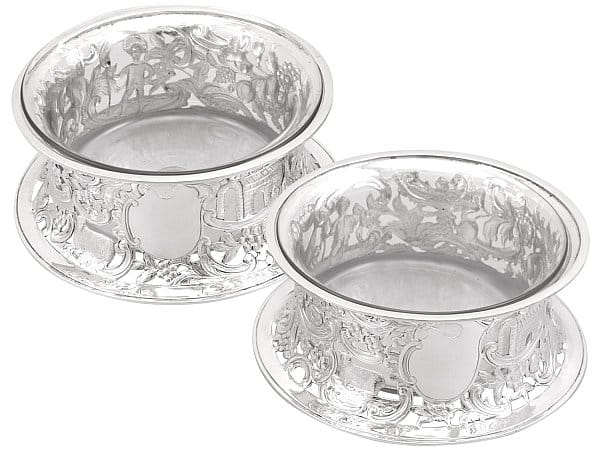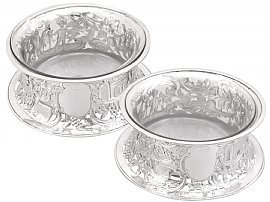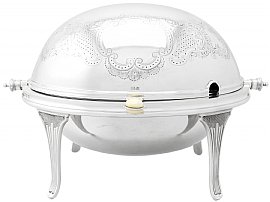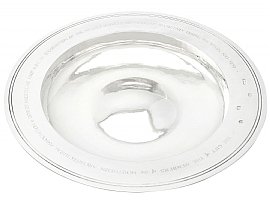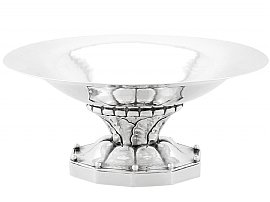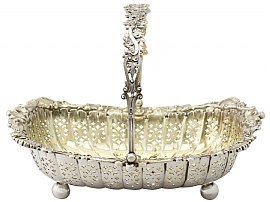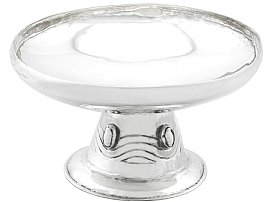History of the Dish Ring
A dish ring, often called a potato ring or even an Irish potato ring, is a circular, spool-shaped stand upon which one can place hot dishes. The intention of the dish ring is both to keep the hot dish insulated, and also to prevent heat damage from occurring to a tabletop or sideboard. In the 1700s, when dish rings were invented, the dining table was often a highly polished wooden surface, and so an intermediary was needed between the table and the hot dishes.
Popular styles for serveware at the time involved highly ornamental decoration, and so most examples of dish rings are ornate with chased and pierced decoration. This serves the dual purpose of allowing the piece to be both practical and beautiful, meaning that when it is not in use, it can be left on display and serve to complement the décor of the space.
Typically, a dish ring is between 3 ½ and 4 inches high, although there are both smaller and taller examples. This allows for serving dishes to take up the most efficient space on the table itself, rather than having every dish sitting at the same height. Some dish rings have the same width on the top and bottom; however, most of them have taper at one end, allowing them to be flipped and used to serve different sized dishes if it is needed.
The most popular eras for the dish ring were middle to late 18th Century, and then the early 20th Century. The Georgian era dish rings are typically of two designs. First, the Rococo style, integrating farmyard and natural decoration such as cherubs, grape vines etc. The second popular style was the Neoclassical style which utilised symmetrical and regular decoration.
The popularity of the dish ring increased in the 20th century, with most examples being made to imitate the Rococo and Neoclassical designs of their forbears. At this time, however, Celtic influences also began to be used in the creation of dish rings, perhaps as a nod to their Irish heritage. Symmetrical knots and weaves commonly found in Celtic artifacts were also etched into 20th century dish rings, allowing them to take on a timeless appearance that is still popular among collectors today.
Another more modern addition to the dish ring is the inclusion of a coloured glass liner. Usually blue in tone, these glass liners not only enhanced the dish ring’s ability to insulate hot dishes, but also added further ornamentation to a piece which is intended to be highly decorative.
Although it is said that dish rings were initially invented in London at the end of the 17th Century, they were a specialty of Irish silversmiths, gaining significant prominence in the region and often being called potato rings.
The Potato Ring
The potato ring became a speciality of Dublin silversmiths from about 1750. The Irish potato ring served a very simple purpose – to hold hot potatoes. The ring, which is open to the bottom, is placed on a plate and then is filled with potatoes, which could then be removed using tongs. Both a practical and beautiful item, dish rings have been a popular choice among collectors for a long time, with their different styles and sizes making them a very versatile piece.
